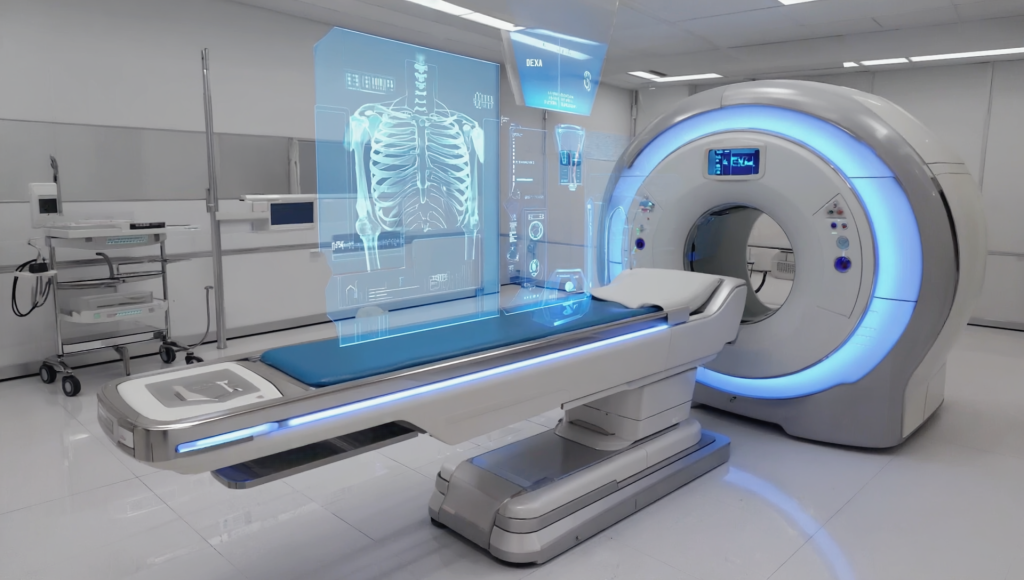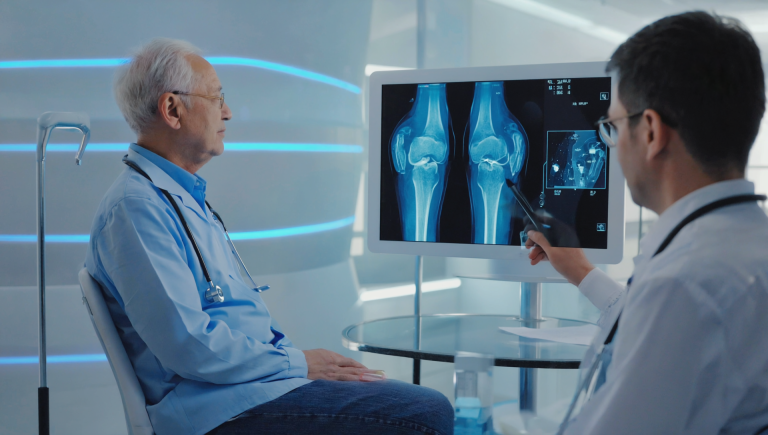Navigating Osteoporosis Treatments: A Comprehensive Guide

Osteoporosis is a prevalent condition that weakens bones and increases the risk of fractures, affecting millions of people worldwide. As advancements in medical research continue to emerge, finding the best treatment options has become more accessible, yet the process can still be overwhelming. This guide aims to provide a comprehensive look at osteoporosis treatments, detailing how to evaluate various therapeutic options, the role of lifestyle changes, and the importance of working with healthcare professionals. Whether you are newly diagnosed or have been managing osteoporosis for years, understanding the available treatments can empower you to make informed decisions about your bone health.
With a multitude of treatment strategies available—from traditional medications and supplements to cutting-edge therapies—patients must consider factors such as efficacy, side effects, cost, and overall impact on quality of life. In this article, we will explore the science behind osteoporosis, discuss the latest innovations in treatment, and offer practical advice on navigating the healthcare system to secure the best care.
Understanding Osteoporosis and Its Impact
Osteoporosis is characterized by low bone density and structural deterioration of bone tissue, which leads to increased fragility and susceptibility to fractures. It is most commonly seen in older adults, particularly postmenopausal women, although men and younger individuals can also be affected. The disease develops gradually, often without symptoms until a fracture occurs, which is why early detection and proactive management are crucial.
The underlying mechanisms of osteoporosis involve an imbalance between bone resorption and bone formation. In healthy individuals, the process of bone remodeling is balanced, ensuring that old bone is replaced by new bone. However, in osteoporosis, this balance is disrupted, resulting in the loss of bone mass and microarchitectural deterioration. Factors such as genetics, hormonal changes, nutritional deficiencies, and sedentary lifestyles all contribute to the development of the disease.
Beyond the physical pain and risk of fractures, osteoporosis can significantly impact an individual’s quality of life. Fractures, particularly of the hip and spine, can lead to long-term disability, loss of independence, and increased mortality. Additionally, the economic burden of osteoporosis is substantial, with costs related to treatment, rehabilitation, and long-term care placing a strain on healthcare systems around the globe.
Evaluating Treatment Options
When it comes to managing osteoporosis, the first step is to accurately assess the severity of bone loss and the risk of fractures. This evaluation typically involves bone density tests, such as dual-energy X-ray absorptiometry (DEXA) scans, which provide a quantitative measure of bone health. These diagnostic tools help both patients and healthcare providers understand the current state of bone density and guide treatment decisions.
Treatment options for osteoporosis are varied, and the best choice depends on several factors, including the patient’s age, the severity of bone loss, risk factors for fractures, and overall health. Medications remain the cornerstone of osteoporosis management. These include:
- Bisphosphonates, which work by slowing down bone resorption and are often the first-line treatment.
- Selective Estrogen Receptor Modulators (SERMs), which mimic estrogen’s beneficial effects on bone density.
- Calcitonin, a hormone that helps regulate calcium levels and bone metabolism.
- Parathyroid hormone analogs, which stimulate bone formation and are used in more severe cases.
In addition to these medications, there is a growing interest in the use of biologics and newer therapeutic agents that target specific pathways involved in bone metabolism. Personalized medicine approaches are also emerging, with genetic and biomarker analyses guiding the selection of the most effective treatments for individual patients.
Advanced Therapeutic Approaches
Beyond traditional medications, advanced therapeutic approaches are gaining traction in the management of osteoporosis. Regenerative therapies, including stem cell treatments, are being explored for their potential to repair and regenerate bone tissue. Although these treatments are still largely experimental, early research shows promise in restoring bone density and reducing fracture risk.
Another exciting development is the integration of digital health technologies into osteoporosis care. Wearable devices, mobile health applications, and telemedicine platforms enable continuous monitoring of bone health and patient adherence to treatment plans. These tools facilitate proactive management and allow for real-time adjustments in therapy based on changes in patient status.
Additionally, lifestyle interventions play a significant role in advanced osteoporosis management. Adequate intake of calcium and vitamin D, regular weight-bearing exercise, and smoking cessation are all critical components of a comprehensive treatment plan. When combined with pharmacological therapies, these lifestyle modifications can significantly enhance bone strength and reduce the risk of fractures.
Lifestyle Modifications and Self-Care
Lifestyle modifications are an essential complement to medical treatments in managing osteoporosis. Diet plays a crucial role in maintaining bone health. Consuming a diet rich in calcium, vitamin D, and other nutrients such as magnesium and phosphorus helps support bone density. Dairy products, leafy green vegetables, and fortified foods are excellent sources of these vital nutrients.
Exercise is equally important. Weight-bearing activities, such as walking, jogging, and resistance training, help stimulate bone formation and improve overall strength. Regular physical activity also enhances balance and coordination, reducing the risk of falls and subsequent fractures.
Stress management techniques, including meditation, yoga, and deep breathing exercises, can also benefit individuals with osteoporosis. Chronic stress can negatively affect bone health by increasing the production of cortisol, a hormone that may accelerate bone loss. By incorporating stress reduction strategies into their daily routines, patients can improve their overall well-being and potentially mitigate the progression of the disease.
In addition to these self-care measures, regular follow-up with healthcare providers is crucial. Routine check-ups and monitoring allow for early detection of any changes in bone density and enable timely adjustments to treatment plans.
Finding the Right Healthcare Provider
One of the most critical aspects of managing osteoporosis is working with a healthcare provider who specializes in bone health. An experienced rheumatologist or endocrinologist can offer valuable guidance on selecting the most appropriate treatment based on individual needs. It is important for patients to ask questions, discuss potential side effects, and consider the long-term implications of any treatment.
Additionally, many patients benefit from a multidisciplinary approach that includes nutritionists, physical therapists, and primary care physicians. This collaborative care model ensures that all aspects of the patient’s health are addressed, leading to a more comprehensive and effective management strategy.
Patients are encouraged to seek second opinions if necessary and to actively participate in their treatment planning. Informed decision-making is key to achieving optimal outcomes and maintaining a high quality of life.
Future Trends in Osteoporosis Treatment
The landscape of osteoporosis treatment is continuously evolving. Future trends point toward more personalized medicine approaches, where genetic profiling and biomarker testing help tailor therapies to individual patients. As research in regenerative medicine and digital health continues to advance, patients can expect more innovative treatments that offer not only symptom relief but also the potential to restore bone density.
Additionally, the integration of artificial intelligence into diagnostic processes will likely enhance early detection and monitoring of osteoporosis. AI-driven analytics can predict fracture risk and provide insights into the effectiveness of various treatments, paving the way for more targeted interventions.
With these advancements, the future of osteoporosis management looks promising. The combination of improved diagnostic tools, advanced therapies, and personalized care strategies will empower patients to take control of their bone health and live more active, fulfilling lives.
As the medical community continues to innovate, ongoing research and collaboration among healthcare professionals, researchers, and technology developers will be essential in driving forward the next generation of osteoporosis treatments.
In conclusion, navigating the complex landscape of osteoporosis treatments requires a multifaceted approach that combines medical interventions, lifestyle modifications, and continuous monitoring. By staying informed about the latest advancements and working closely with specialized healthcare providers, patients can identify the best treatment options to manage their condition effectively. The future of osteoporosis care promises further innovation and improved quality of life for those affected by this challenging condition.





